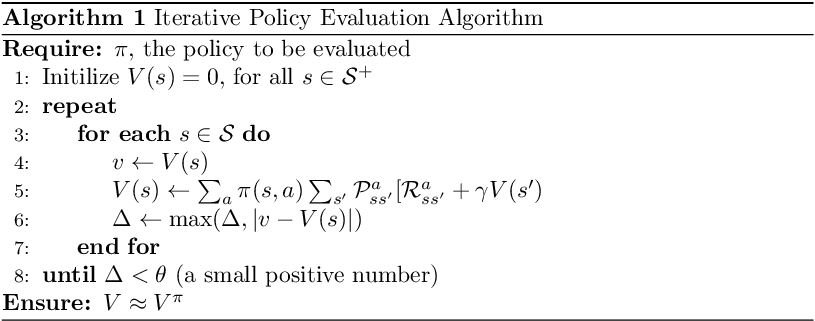

- LATEX PSEUDOCODE PACKAGE HOW TO
- LATEX PSEUDOCODE PACKAGE PDF
- LATEX PSEUDOCODE PACKAGE FULL
- LATEX PSEUDOCODE PACKAGE SOFTWARE
- LATEX PSEUDOCODE PACKAGE CODE
LATEX PSEUDOCODE PACKAGE CODE
Notable features include customizable indent guide lines and the ability to draw boxes around parts of the code for highlighting differences. It is based on algpseudocode from the algorithmicx package and uses the same syntax, but adds several new features and improvements.
LATEX PSEUDOCODE PACKAGE PDF
So, following commands should be added to that file in the appropriate places to make an example algorithm.ĥ: \ProcedureĪfter this if we generate the PDF file, our algorithm should appear in the paper like the following. To be sure, the error might not be in your own index. This package allows typesetting pseudocode in LaT. I do it by the following command.įor preparing the manuscript I used the bare_conf.tex file coming with the latex templates which can be downloaded from IEEE website here. Languages include C, Python, and SQL plus HTML, CSS, and JavaScript.
LATEX PSEUDOCODE PACKAGE FULL
I write it down here to avoid forgetting it and also for the benefit of somebody somewhere in this world.įirst of all I should have installed the full package of latex on my Ubuntu 12.04 machine to avoid the problems of different missing packages. I am planning to shift to that next time on.While preparing a manuscript on a IEEE latex paper template, I wanted to add a pseudo code of an algorithm to it. In fact, I have lost track of the source and accompanying documentation of the version I am currently using.

com/Videos/ProgrammingAndAlgorithms/MainMenu. There seem to be many versions of it available on the web which unfortunately seem to have originated from completely different sources, and therefore are incompatible with each other. You must declare all variables before using them in your pseudo code. However, using algo.sty has a severe problem. Notably, if you are using algo to write your algorithm, the indentations will disappear if the algorithmic package is used. Please note that when you are using algo, you must exclude algorithmic. I prefer algorithm, algo combination the best. It has got function calls, and multiple procedures.

That problem gets mitigated if we replace algorithmic with algo. 74 keyword, 176, 299, 312 KIS principle, 111 knitr, 115 language, 13 LaTeX, 115 less. algorithmic doesn't seem to have a way of having more than one procedure in a single algorithm. However, this seems to have a drawback from what I observed. I would like to see an example of Tex/Latex code that would mimic the style, formatting and design of the pseudocode illustrated on this picture. No installation, real-time collaboration, version control, hundreds of LaTeX templates, and more. An online LaTeX editor that’s easy to use.
LATEX PSEUDOCODE PACKAGE HOW TO
Both come bundled in the same package that can be downloaded from here.Ī usual way is to nest algorithmic inside algorithm. TeX - LaTeX: I would like to know how to format a pseudocode algorithm like the one shown in the picture below. An example showing how to use pseudocode in Algorithmcx. My colleagues seem to prefer a combination of algorithm and algorithmic. THANKS: mentions of thanks for contributors to the package Starting with with the release, the package is now versioned and this document corresponds to version v0.1. To write proper algorithms, one should use one or more of the above. Hi Tommy, welcome to the forum It seems that there' a compatibility issue with all those algorithm packages together. But, option 3 seems more appropriate for algorithms. I've taught myself a bunch and have found some useful packages with which I've been playing around (for example tcolorbox, titlesec, and fancyhdr, as well as using different fonts). I'd like to spend a bit of time to make these notes look nicer. Well, I don't think there's any inherent limitation, since it seems to be a very stable package. I've used LaTeX for some time, but used relatively minimal formatting in my documents.
LATEX PSEUDOCODE PACKAGE SOFTWARE
Software Requirements: No specific requirements This software is designed to run on the following operating systems. However, listings appears more appropriate only for inserting code snippets, and not algorithms. Software Description: The algorithms package is aimed at (flexibly) typesetting pseudo-code in LaTeX documents (with the high typographical quality provided by the TeX engine). And you could add it right as a part of your regular text. You can include source-code directly from an external file. listings is very versatile, giving you the facility to include code snippets of many languages (C, C++, Pascal, pseudocode, HTML.). So, it may already be there on your machine. It usually comes prepackaged in latex installations. In total, it's not advised to use this method. May be OK to use that for small code snippets. That would give a type written look to the algorithm. There're a number of ways in which algorithms can be written in a latex article.


 0 kommentar(er)
0 kommentar(er)
